| Name | Kelman Cyclodialysis Cannula |
| Lead Time | Lead time advised within 48 hours of order placement. |
| Competitor | ;601085;60-1085;6010-85;OP0901212;OP0901-212;601086;60-1086;6010-86;6010-85_6010-86; |
| Specialty | Ophthalmology-Cannulas |
| Material Finish | Stainless Steel |
| Grade | Premium Operating Room |
| Units of Measurement | Each |
| Manufacturer | Medicrest Surgical Industries |
| Sterility | Non-Sterile |
| Usage | Reusable |
Kelman Cyclodialysis Cannula
19-gauge cannula, marked at 5.0, 6.0, & 7.0 mm, 2 irrigating ports Kelman Cyclodialysis Cannula is a commonly used tool in glaucoma procedures. The cannula is frequently used to irrigate the anterior chamber once a communication has been established between the anterior chamber and the suprachoroidial space. The cannula features a port on both the right and left side depending on surgical preference.
SKU:
MSI-05-1052
Category: Cannulas
Description
Reviews (0)
Be the first to review “Kelman Cyclodialysis Cannula” Cancel reply
Shipping & Delivery
Related products
Atkinson Retrobulbar Needle
sharp rounded point, 25-gaugeAtkinson Retrobulbar Needle is a commonly used tool in preoperative treatment of ophthalmologic procedures. The needle may be used to perforate the orbital septum in administering an anesthetic or alcohol. Two different gauges are available with the needle depending on surgical preference.
Binkhorst Irrigating Cannula
Bracken Anterior Chamber Cannula
curved, 19-gauge, overall length excluding hub 13/16" (2.1 cm) Bracken Anterior Chamber Cannula is a frequently used tool in cataract extraction procedures. The small gauge cannula is nimble enough to fit into a small limbal incision accessing the anterior chamber. It may be used to aspirate fluid within the anterior chamber exposing the lens capsule. The curved nature of the shaft assures minimal surgical obstruction.
Gill-Welsh Olive Tip Cannula
angled 45 degrees, 25-gauge Gills-Welsh Olive Tip Cannula is a commonly used tool in a variety of cataract procedures. The cannula is used to gently manipulate the lens tissue while aspirating remaining debris following phacoemulsification. The 45 degree angled shaft aids in visualization during the procedure.
Knolle-Pearce Irrigating Lens Loop
1.0 mm tip, angled 30 degrees, sandblasted, 23-gauge, 3/4" (2.0 cm)Knolle-Pearce Irrigating Lens Loop is a useful tool for cataract and lens extraction procedures. The loop is instated between the nucleus and the posterior capsule; fluid is allowed to pass into this space to allow for easier removal of the lens. Three irrigation ports provide ample fluid distribution.
Kratz Cystotome
30-gauge Kratz Cystotome is a commonly used tool during cataract phacoemulsification procedures. The cystotome may be used to create a circular incision in the anterior capsule before proceeding with aspiration of the lens. The sharp tip combined with 60 degree angled shaft allows for easy cutting and visualization.
Maumenee Vitreous Aspirating Needle
blunt tip w/ markings, 5.0 mm, 10.0 mm & 15.0 mm, 18-gauge Maumenee Vitreous Aspirating Needle is a commonly used tool in retinal ophthalmologic procedures. The needle features a large gauge designed for the aspiration of the viscous vitreous fluid following retinal detachment or increased pressure. In addition, markings on the gauge aid the physician in navigation of the tool.
Randolph Cyclodialysis Cannula
front air injection port, 12.0 mm angled tip, 19-gauge Randolph Cyclodialysis Cannula is a commonly used tool in glaucoma procedures. The cannula is frequently used to irrigate the anterior chamber once a communication has been established between the anterior chamber and the suprachoroidial space. The cannula has a front injection air port and features a flat tip or thin spatula blade depending on surgical preference.


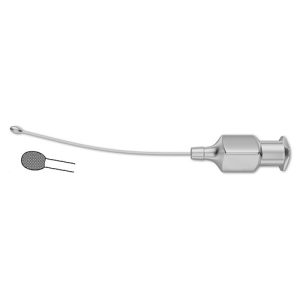

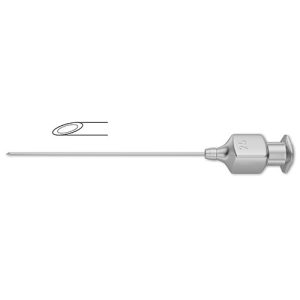
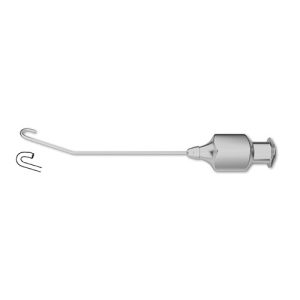
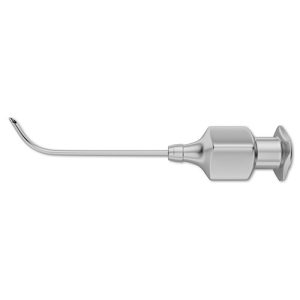
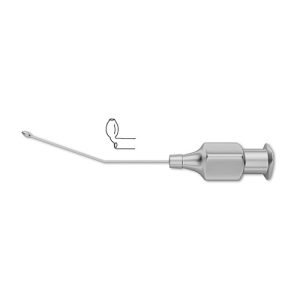
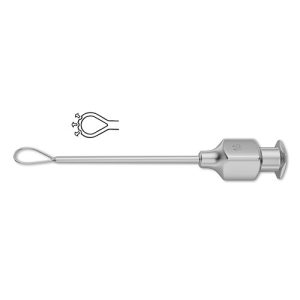
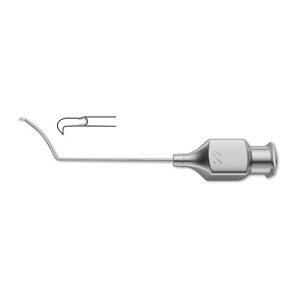



Reviews
There are no reviews yet.